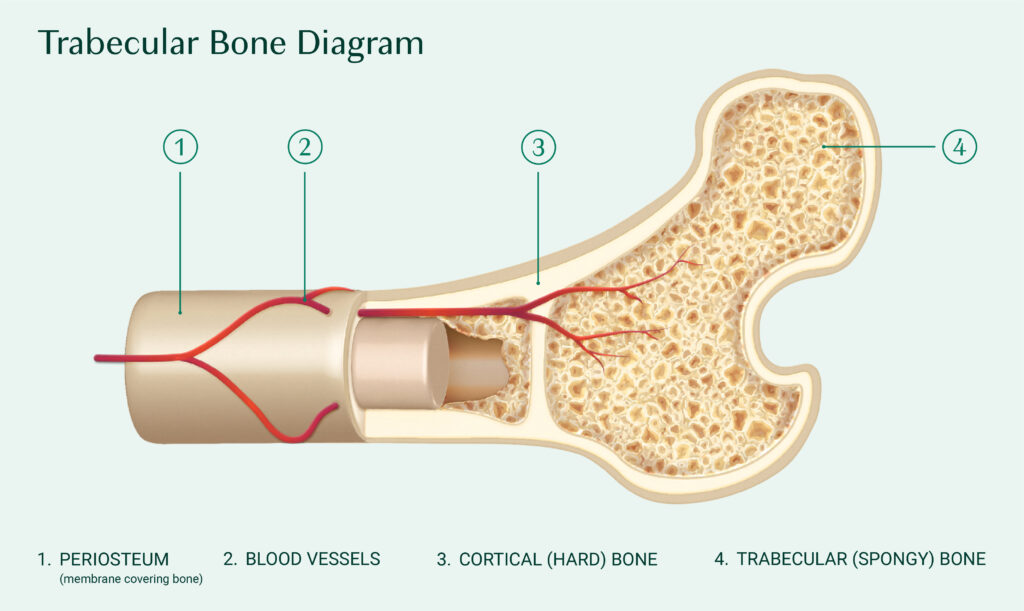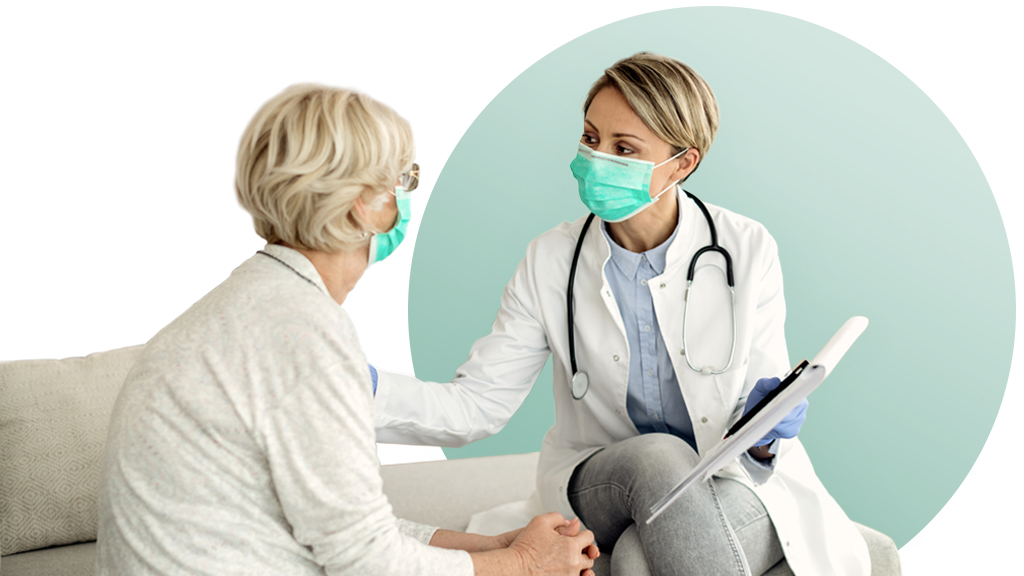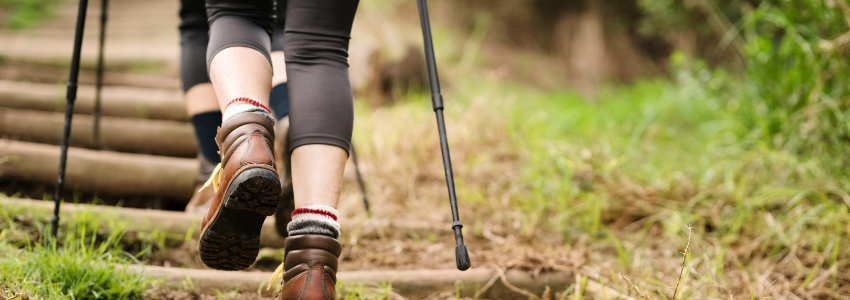Lifelong friends Jane and Barbara are very similar…
They’re both in their late 60s. They both eat a healthy diet. And they both love to hike with their grandchildren.
But Jane has suffered several low-impact fractures in the last few years. And Barbara? None.
The two ladies have a similar bone density, though, so what gives?
Well, we tend to think of osteoporosis in terms of bone density, and we should. Yet there’s something else at play that’s just as important…
Bone quality.
Today, I’d like to show you the difference between bone density and bone quality, and how by knowing both, you can get the clearest picture of your overall bone health.
How is Bone Quality Different from Bone Density?
Bone density refers to the amount of minerals in your bone tissue. It’s calculated by looking at your mineral bone mass per volume of bone.
Bone quality refers to the composition and structure of your bones which contribute to bone strength independently of bone mineral density. This includes several parameters but we will focus here on the structural one, also known as your microarchitecture.
As we’ll cover in a moment, it’s the combination of density and quality which produces the strongest bones.
Like bone density, several factors can affect whether your bone quality is good or poor. Things like certain medications, prior illnesses, and not consuming enough bone-building nutrients to support healthy bone strength.
Until recently, the best way to know your bone structure, or quality, was by having a bone biopsy. A bone biopsy is a costly surgical procedure requiring sedation and a possible hospital stay. And it only looks at a certain part of your bone that’s typically non-weight bearing and unlikely to fracture.
That’s why Medimaps Group, the medical company I co-founded, developed TBS Osteo. It’s a software tool that makes it easy to get a trabecular bone score (TBS) test –– a test which will estimate the structural part of your bone quality. Best of all, it’s painless, radiation free, and only takes a few seconds!
Take a look at the short video-chat with me and Lara Pizzorno, AlgaeCal’s Resident Bone Health Expert, where I talk more about bone quality and provide an everyday example to demonstrate…
Using my chair analogy from the video, a chair with a sound framework of legs and “scaffolding” bars better supports you, just like bones with a strong structure provide better support. And that’s what bone quality is all about in our context here. You see, bones can be mineral-dense yet poorly structured. That’s why Jane’s bones are more prone to fracturing than Barbara’s — her bone quality is poorer.
How Does a TBS Bone Quality Test Work?
TBS Osteo works by estimating a surrogate (TBS) of your bone quality and then using that information to calculate your fracture risk. It does this by analyzing how well-structured or poorly structured your trabecular bone appears, how much connective tissue it has, and its thickness. These things, combined with your bone mineral density, determine in majority the strength of your bone and your risk of fracture.
What’s your trabecular bone?
Well, there are two “kinds” of bone: cortical and trabecular. Think of an M&M candy… the cortical bone is the hard outer shell, and the trabecular bone is the soft chocolate inside. Bone resorption, or bone breakdown, occurs along bone surfaces in the trabecular bone.
A TBS result greater than 1.310 is considered normal, 1.230–1.310 indicates partially degraded bone, and less than 1.230 is considered degraded bone at high risk of fracture. A high TBS means you have a strong, fracture-resistant bone structure, while a low score means a weak, fracture-prone bone structure. But you shouldn’t count on your TBS results alone… instead, they should be interpreted along with your DEXA results, and the clinical context.

TBS + DEXA = A Winning Combination
Make no mistake… TBS doesn’t replace regular dual-energy X-ray absorptiometry (DEXA) scans, and I wholeheartedly recommend them. In fact, measuring your bone density with a DEXA scan is still the “gold standard” for diagnosing osteoporosis. To learn more about DEXA scans and their benefits, click here.
Rather, TBS complements your DEXA results. The beauty of having both tests is that you get a better picture of your bone health: bone density and bone quality.
In fact, two large-scale studies on older women, one with 29,407 women and another with 1,007 women, came to the same conclusion: The combination of TBS and DEXA was better at predicting fractures than either test alone, both in osteoporotic and non-osteoporotic women, and thus independently of most of the clinical risk factors.
But what about FRAX?
You may have heard about the Fracture Risk Assessment Tool (FRAX) or may have even had a FRAX test yourself. You answer a set of 12 questions about your current bone density, family history, medications you take, lifestyle routine (whether you smoke, for example), and others. Then the FRAX formula uses your answers to calculate an estimate of your fracture risk.
FRAX doesn’t look inside your bones, and that’s where TBS shines. It builds on the information provided by FRAX and fine-tunes it. So if you’ve already had FRAX, getting a TBS test can give you a more refined prediction than FRAX alone.
How to Get A Trabecular Bone Score

Besides giving you the peace of mind that comes from knowing your bone quality, TBS offers another big benefit, and that’s convenience!
You can get your TBS test at the same time you get your DEXA scan. That’s because they’re done on the same machine and use the same images. You see, the software that calculates your TBS result (TBS Osteo) is installed directly on DEXA scanners, or on a remote workstation. So the images that your doctor uses to determine your DEXA results are the same ones used for your TBS calculation.
Not all facilities offer TBS yet, but you can check here to see if a clinic near you does. You’ll also want to check with your health insurance company to see if it covers TBS; if not, the cost is about $50–$150 U.S. dollars.
So, I highly suggest getting a TBS test with your next DEXA scan. After all, if you’re worried about your bones, there’s nothing more empowering than knowing both your bone density and bone quality. Because the more information you have about your bone health, the better equipped you are to make the right decisions for you. And the better equipped your healthcare provider is to advise you.






Karen
November 28, 2020 , 8:57 amVery interesting. Trying algaecal , yoga and anything possible to strengthen my bones.